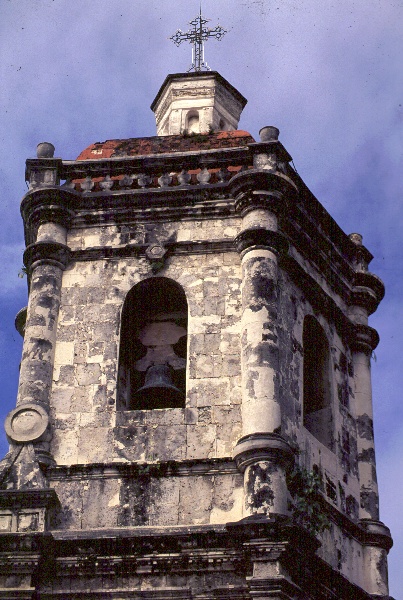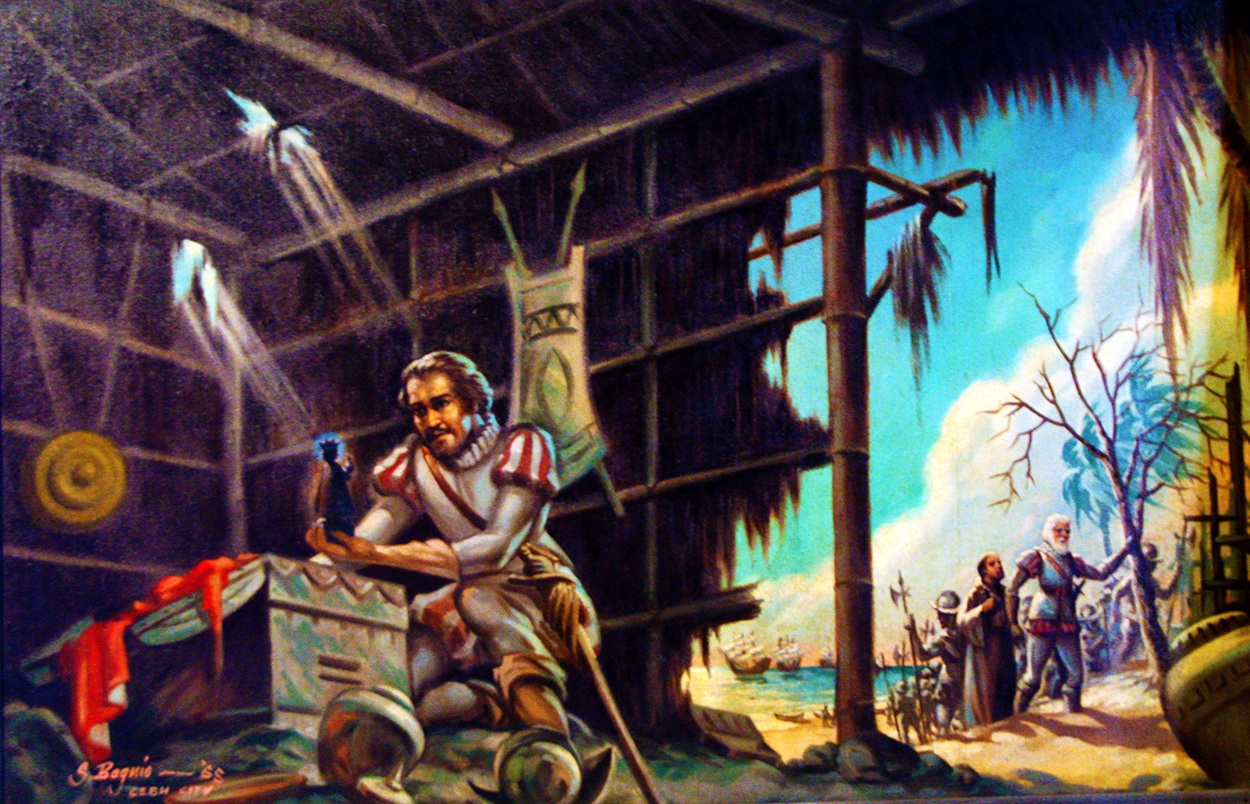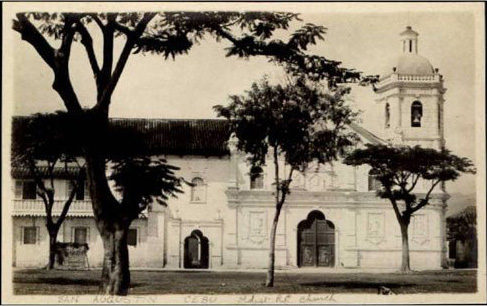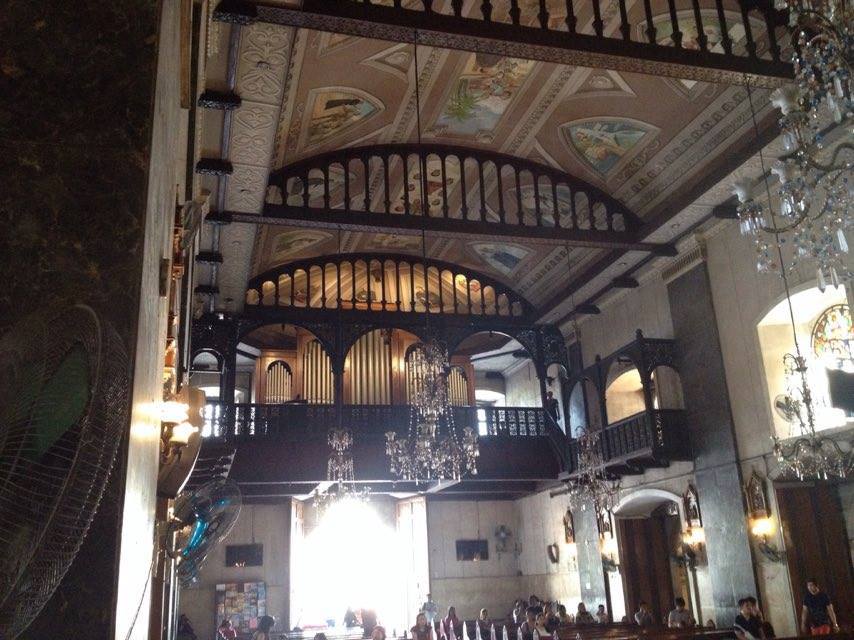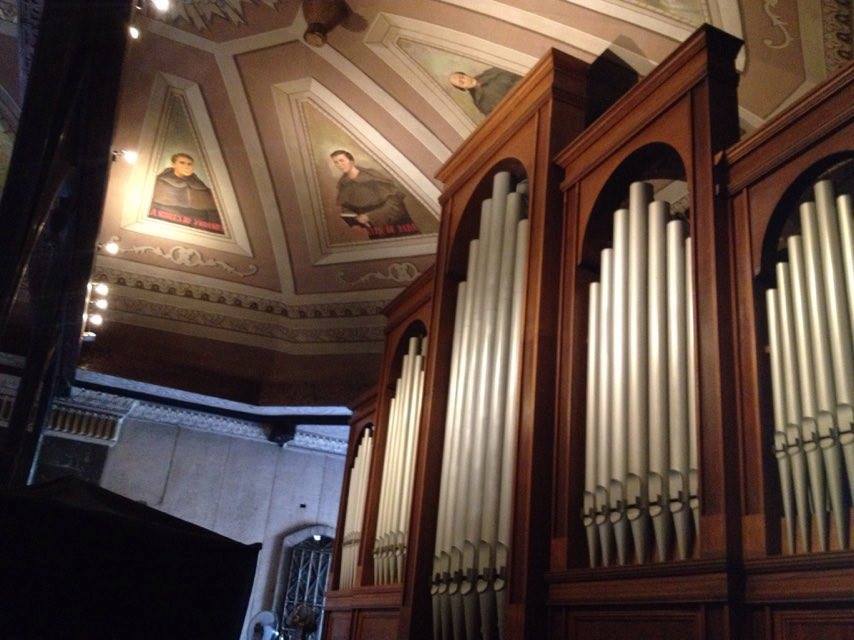Basilica Church

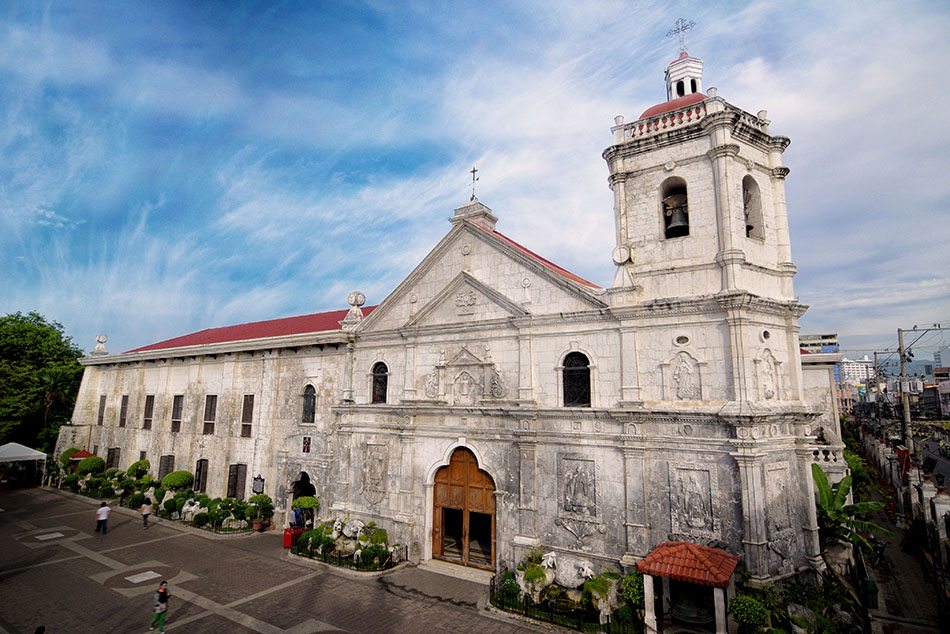
Foundation of the Church
The convent and the Church of the Sto. Niño de Cebu was founded by Fr. Andres de Urdaneta on April 28, 1565 , the very day the Legazpi-Urdaneta expedition arrived in the island. On May 8 of the same year, when Legaspi and his men planned the urbanization of the city, they allotted a “place for the church and the convent of San Agustin, “where the Santo Niño image had been found.”
In 1599, the convent was made a house of studies of grammar, headed by the Visayan linguist, Fr. Alonso de Mentrida. It also served as a rest house for missionaries working in the province and as a retirement home for the aged and the sick, usually attended to by a lay brother.
The church has always been the Sanctuary of the Sto. Niño, under the custody of the Augustinians. The number of priests assigned to the church varied from three to five aside from one or two lay brothers.
Fr. Andres de Urdaneta, OSA, commissioned by Royal order of Spain’s King Philip II to launch and direct the expedition to the Philippines, boarded the Nao Capitana on November 20, 1564. With him was Miguel Lopez de Legazpi and four other Augustinians: Frs. Martin de Rada, Andres de Aguirre, Diego de Hererra and Pedro Gamboa. The expedition took over three months to sail from Mexico to Samar, and from Samar to Bohol. On Easter Sunday, April 22, the fleet set sail from Bohol to Cebu, the old kingdom of Humabon, now the realm of Rajah Tupas. Skeptical of the Spaniards’ porestations of friendship and their peace offerings, Tupas had his town evacuated and his allies summoned. No battle, however, ensued. On easter Sunday, April 28, Legazpi ordered the ships’ artillery to fire. The natives fled to the mountains. He landed in Cebu and found an empty burned town. Inside a poor nipa house, Juan Camus, a sailor of the fleet, found the statuette of the Santo Niño, theimage that arrived here with Magellan and was presented by Pigafetta to the Queen of cebu when she turned Christian. The finding of the Santo Niño, fired the Augustinians’ hope and courage in their mission of christianizing the Filipinos. Since then, they spread the devotion to the Santo Niño to various parts of the islands. Soon Tigbauan (Iloilo), Tondo, Leyte, etc., became popular center of worship to the Santo Niño. People from Negros, the elite from Molo, Jaro, and Iloilo, did not fail to pay tribute to the Santo Niño at Tigbauan during the yearly novenario and fiesta. In 1572, Fr. Alonso Alvarado, OSA, built the first church of Tondo and dedicated it to the Santo Niño. Filipinos carried the devotion as far as the Spice Islands, where a Christian tribe in Ternate decided, when the Spanish-Filipino troops were pulled out from that island, to migrate to the Philippines. They carried with them their patron: the Santo Niño de Ternate, and founded the Cavite town of Ternate.
The cult to the Santo Niño ranges in form from the Pit Senyor among the Cebuanos to anything-goes of the Ati-atihan in Aklan, or the beautiful fluvial parade in Tondo. But the Basilica del Santo Niño is still the “center of pilgrimages, the symbol of faith of the Filipino people,” the place where “the birth and socio-political development of our nation” started.
Construction of the Church and Monastery
The Santo Niño church dates back to the earliest years of the Augsutinians in the Philippines. The nipa house where the Santo Niño was found, as well as the surrounding area, was assigned to the Augustinians where they built the first chapel in the Philippines. In this small and temporary building the Santo Niño was housed. Six years later Fr. Martin de Rada began the construction of church and monastery. These buildings were made of light material in consonance with the style at that time in the islands. Gutted by fire, the Augustinians decided to build them of stronger materials.
Despite the strong material, on March 8, 1628, a big fire razed to the ground both buildings, as well as a part of the town. Fr. Juan de Medina, prior at the time and an eye-witness of the tragic event, tells us that “at one o’clock the fire began in the middle of the city… the wind was brisk, and blowing toward the convent. In short, everything was burned, though we saved the silver and whatever possible… This happened on Saturday, the eve of Passion Sunday. I gathered all that escaped to the monastery of San Nicolas, and set about going to Manila, to repair that loss as far as possible.”
Fr. Medina went to Manila to ask permission and solicit funds for the new buildings. While in Manila, he addressed a petition to the King for the much needed help. With the encouragement and help from the Augustinians in the Islands, he started the new buildings. These second church and monastery stood over one hundred years.
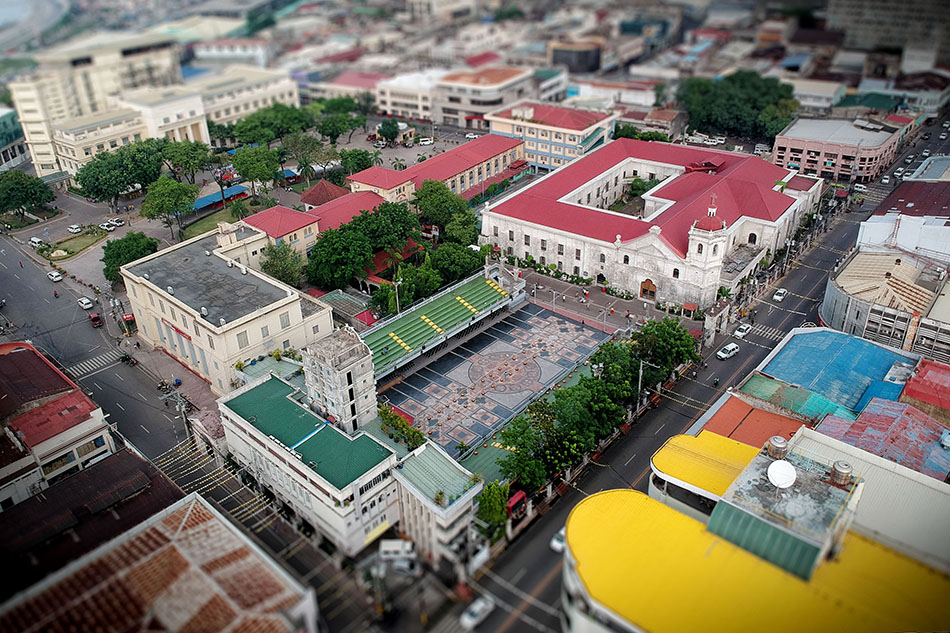
In 1729, part of the roofing and façade of the church fall down. Fr. Jose Bosqued, considering the building in deplorable condition decided to raze it and replace it with stronger one. Permission obtained from the Head of the Augustinians in Manila, Fr. Bosqued lacking funds and manual labor, appealed to Fenando de Valdes y Tamon, Govenor General of the Islands, to allow some natives of the towns of San Nicolas, Carcar and Boljoon to work in the new church, and free them from whatever polo or service they were bound to. With funds in hand and the promised help by the Governor General, Fr. Bosqued began, in 1730, the construction of a brick-church, as he thought it not possible to find stone in Cebu Islands for the project. Because of the humid weather condition in the island, the bricks soon started to deteriorate. Thus, three years later, his successor, Fr. Jose Treviño, ordered the suspension of the work, when construction had barely come up to window level. However, he continued gathering materials from neighboring islands for the construction of a better, bigger and more solid church. At that time in Bauan, Ilocos there lived an Augustinian who specialized in constructing churches in the Philippines. He was Fr. Juan Albarran, who demolished whatever Fr. Bosqued built. He faced the same difficulties as his predecessors: lack of appropriate materials. Told that the only stones available in the island had already been used for the construction of the Colegio of the Jesuits, Fr. Albarran, continued his search for stone for a whole year. Some good stone found in the town of Carcar he used for the foundations of the church. Later, he discovered a big quarry in Mactan Island which could supply any quantity needed for the project. As Mactan was separated from Cebu Island, now Fr. Albarran had to solve another problem, the transportation of the materials to the site of construction. At that time, according to reports, there were no bancas in Ceu. The only solution was to get the bancas from Capiz and Pan-ay until they could be built in Cebu from the hard wood Fr. Albarran himself searched for in the mountains of Talisay and Pitalo.
On February 24, 1735, Fr. Albarran, with the help of Fr. Antonio Lopez, OSA, Prior of San Nicolas, started the foundation of the church. Manual labor was provided from San Nicolas, Talisay and for a while, from Mactan Island. Five years later, on Janaury 16, 1740, the present church was blessed and the statuette of the Santo Niño was placed in its own altar. The occasion was highlighted with an eight day celebration with religious and civic activities. Cebuanos and people from the whole Visayas trekked to the Santo Niño shrine to pay homage to their protector and patron. The monastery was started in 1751 and was finished around the year 1773.
Work on the church continued in the succeeding years. Fr. Pedro Espineyra, successor of Fr. Albarran, finished the ceiling, made a wooden choir (replaced by the present Fr. Manuel Ibeas), and gilded the retables.
In 1773, the whole interior of the church was painted. Dn. Protasio Cabezas, Bishop of Cebu, donated in 1755 the first organ, sold to the seminary in 1875 by Fr. Gabriel Alvarez. This was replaced in 1965, during the Fourth Centennial of the Evangelization of the Philippines. The pulpit was ordered by Fr. Mateo Diez in the late 1880s and the side altars by Fr. Fernando Magaz in 1886. The original wooden-shell windows were replaced by the present ones of iron by Mateo Diez. The chandeliers were bought by Fr. Valerio Rodrigo at the beginning of this century.
Throughout the years the church underwent several minor repairs. But in 1964 as preparation for the solemnities during the Fourth Centennial Evangelization of the Islands, Fr. Restituto Suarez and later the late Fr. Casimiro Garcia, made a major face lifting in church and monastery (Policarpio Hernandez, OSA).
Summary of the Church Construction
- 1566 – the first church believed to be built on the site where the image of the Holy Child was found was destroyed by fire. It was said to be built by Fr. Diego de Herrera using wood and nipa.
- 1605 – Fr. Pedro Torres started the construction of a new church, again made of wood and nipa. It was finished in 1626 but was again burned in 1628.
- 1628 – Fr. Juan Medina started the construction of another church, using stone and bricks, a great innovation at that time. The construction was stopped because the structure was found to be defective – the bricks used seemingly “melted” upon contact with air.
- February 29, 1735 – Father Provincial Bergaño, Governor-General Fernando Valdes, Bishop Manuel Antonio Decio y Ocampo of Cebu and Juan de Albarran Prior of the Santo Niño, started the foundations of the present church, using stone. A lot of help came. Fr. Antonio Lopez, prior of San Nicolas, assisted also together with the people of his district. The residents of Talisay also did four weeks of work and Fr. Francisco Aballe also tried to help with his parishioners from Mactan.
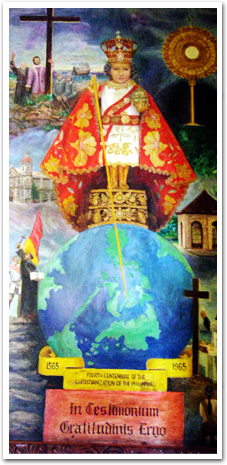
The materials used:
The stones were quarried from Capiz and Panay by an army of bancas. The molave wood came from the mountains of Talisay and Pitalo and was transported in bancas hired in Argao and Carcar. Fr. Albarran confessed that there was much difficulty in quarrying the stones. Despite the seemingly impossible task, Fr. Albarran was not discouraged. He used white stones to make the lime, with one banca transporting some 400 pieces of stones. There was also another obstacle: the lack of chief craftsmen and officers which forced Fr. Albarran to acquire some knowledge of architecture.
The church was finished not later than 1739. According to an author named Vela, “the church has all the characteristics of a solid construction to withstand all the earthquakes…” And true enough, the church withstood all earthquakes.
The original features of the church have been retained except for the windows added by Fr. Diez in 1889. In 1965, both church and convent underwent a bigger restoration on the occasion of the fourth centennial of the Christianization of the country. The face lifting was made with utmost respect for the historical character of the old structure.
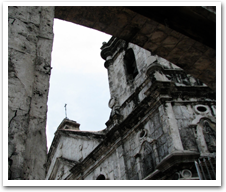
Cardinal Hildebrando Antoniutti, Papal Legate to the Philippines , conferred upon the church the title of Basilica minore , a special privilege granted to the Augustinian Order by the Pope Paul VI. On the other hand, the former President Ferdinand Marcos declared the Sto. Niño Basilica a national shrine because of its historical significance.
Style of the Church
- Facade – a blending of Muslim, Romanesque and neo-classical features – all set in what has otherwise been described as a high degree of integration. The façade is preserved in its original stone texture and natural color, conveying an air of simplicity of line and elegance.
- Bell tower – serves as a counterbalance to the convent located on the opposite far end. It has two blind and open windows alternating in shape, ending up in triangular pinnacles with a circular disc crowned by balusters and a bulbous dome of Muslim influence.
- Center section – the focus of attention. The arched main entrance is balanced by the side rectangular corners. A double-edged triangular pediment crowns the facade.
